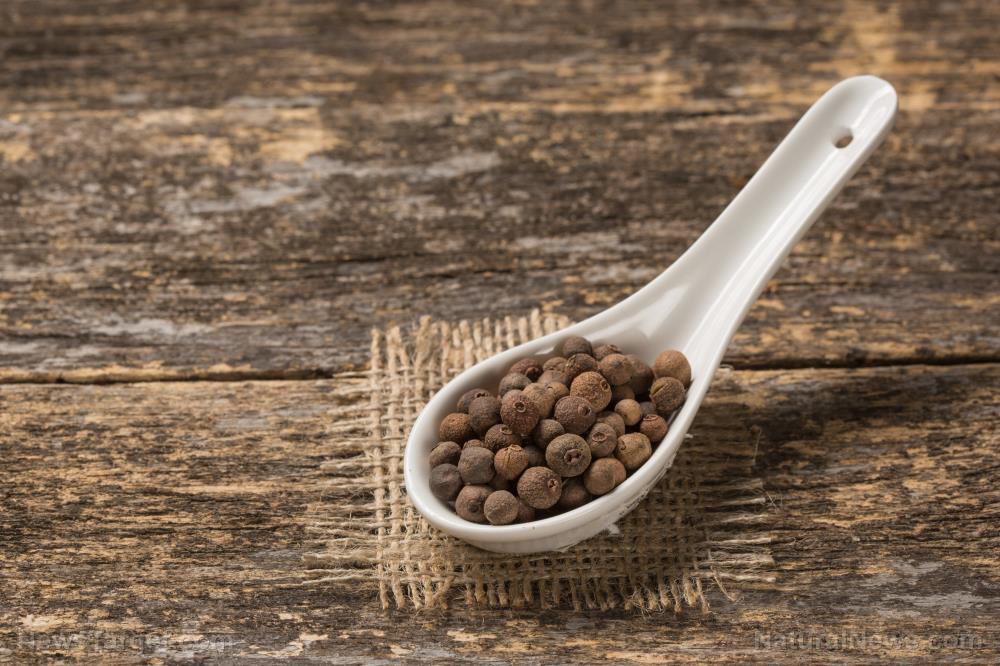Your eyes, skin, and immune system need vitamin A: Increase your intake with these foods
07/22/2019 // Stephanie Diaz // Views
Tags: #nutrition, antioxidants, carotenoids, carrots, clean food, eggs, fat soluble vitamin, Fish Oil, food cures, food is medicine, functional food, goodfood, goodhealth, immune system, immunity, Papaya, retinol, superfoods, vitamin A, xantophyll

Vitamin A exists in nature in three different forms: retinol, xanthophyll, and carotenoid. Many foods are rich in vitamin A. Daily consumption of these foods can boost your eye and skin health and improve immune function.
Foods that are rich in vitamin A
The active form of vitamin A, retinol, can only be found in animal sources. Organ meats, fatty fish, dairy products, and eggs are among the most abundant sources of retinol.
- Turkey liver: Turkey liver is an excellent source of iron, calcium, and other essential micronutrients. In fact, a single serving contains 21,700 micrograms (mcg) of vitamin A, which is more than enough to cover the recommended daily intake (RDI).
- Fish oil: Fish oil is one of the best sources of retinol. A teaspoon of cod liver oil can provide 150 percent of the RDI.
- Fatty fish: Fatty fish like tuna, mackerel, and salmon are among the richest sources of vitamin A. A serving of tuna can deliver approximately 30,000 mcg of retinol. Eating fatty fish can also increase the intake of omega-3 fatty acid and protein.
- Dairy products and eggs: Yogurt, butter, and egg contain more-than-adequate amounts of retinol. A tablespoon of butter has 317 International Units (IU) retinol while a serving of yogurt has 243 IU. A serving of egg has 300 IU.
Carotenoids and xanthophyll can be found in abundance in the fruits and vegetables listed below.
- Cantaloupe: A single serving of cantaloupe contains more than adequate amounts of vitamin A. This yellow-orange fruit is also rich in vitamin C, which also boosts immune function. Cantaloupe can be eaten as a snack or can be added to salads and desserts. (Related: Cantaloupe prevents cancer, improves vision, deeply hydrates & alkalizes the body.)
- Papaya: This fruit is rich in vitamin A, specifically carotenoids. A serving contains approximately 31 percent of the RDI. Papaya also contains essential micronutrients and antioxidants. This fruit is best enjoyed fresh, but it can also be added to smoothies or sorbets.
- Mango: A serving of this sweet fruit can provide 25 percent of the RDI of vitamin A. Mangoes are rich in vitamin A and minerals like potassium and phosphorous. Mangoes go well with desserts and can be added to yogurt to boost its flavor.
- Tomato: While tomatoes are often lumped with other vegetables, they are actually fruits. A serving of cherry tomatoes provides 25 percent of the RDI of vitamin A. Tomatoes are also a rich source of other nutrients like vitamins C and K, folate, and potassium.
- Tangerine: This citrus fruit is a rich source of vitamin A and C, calcium, and dietary fiber. One serving of tangerine provides 27 percent of the RDI of vitamin A.
- Spinach: Spinach is a common ingredient in salads. Eating a serving of this leafy green can provide up to 49 percent of the RDI of vitamin A. It is also a rich source of vitamin C, vitamin K, manganese, iron, and potassium.
- Carrot: Eating carrots is often associated with 20/20 vision, and for good reason – carrots are among the richest sources of vitamin A. A single serving can provide approximately four times the RDI. Carrots also contain vitamins B, C, and K, magnesium, and fiber.
- Sweet potato: This carbohydrate-rich tuber is a good source of dietary fiber, vitamin C, and vitamin A. A single sweet potato can deliver up to 438 percent of the RDI.
- Mustard greens: This dark green leafy vegetable is among the best sources of vitamin A. In fact, a serving of mustard greens provides 118 percent of the RDI. This vegetable is also a great source of other vitamins and minerals, such as calcium, manganese, vitamin C, K, and E.
Food.news has more on sources of vitamin A and its health benefits.
Sources include:
Related Topics
#nutrition antioxidants carotenoids carrots clean food eggs fat soluble vitamin Fish Oil food cures food is medicine functional food goodfood goodhealth immune system immunity Papaya retinol superfoods vitamin A xantophyllLatest News
Related News
11/21/2023 / By Arsenio Toledo
11/21/2023 / By Zoey Sky
11/20/2023 / By Zoey Sky
11/20/2023 / By Arsenio Toledo
11/19/2023 / By Zoey Sky
11/17/2023 / By Zoey Sky
Take Action:
Support Natural News by linking to this article from your website.
Permalink to this article:
Copy
Embed article link:
Copy
Reprinting this article:
Non-commercial use is permitted with credit to NaturalNews.com (including a clickable link).
Please contact us for more information.
Please contact us for more information.























